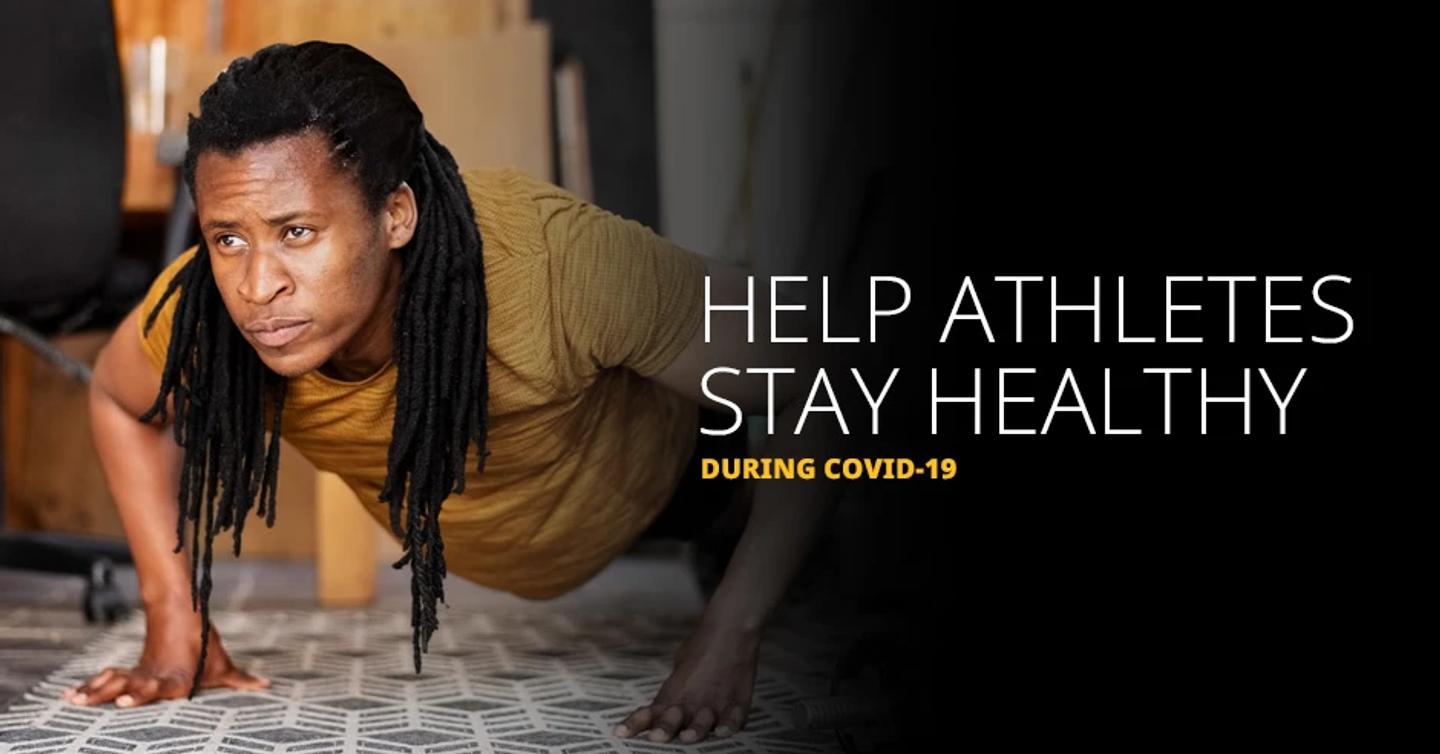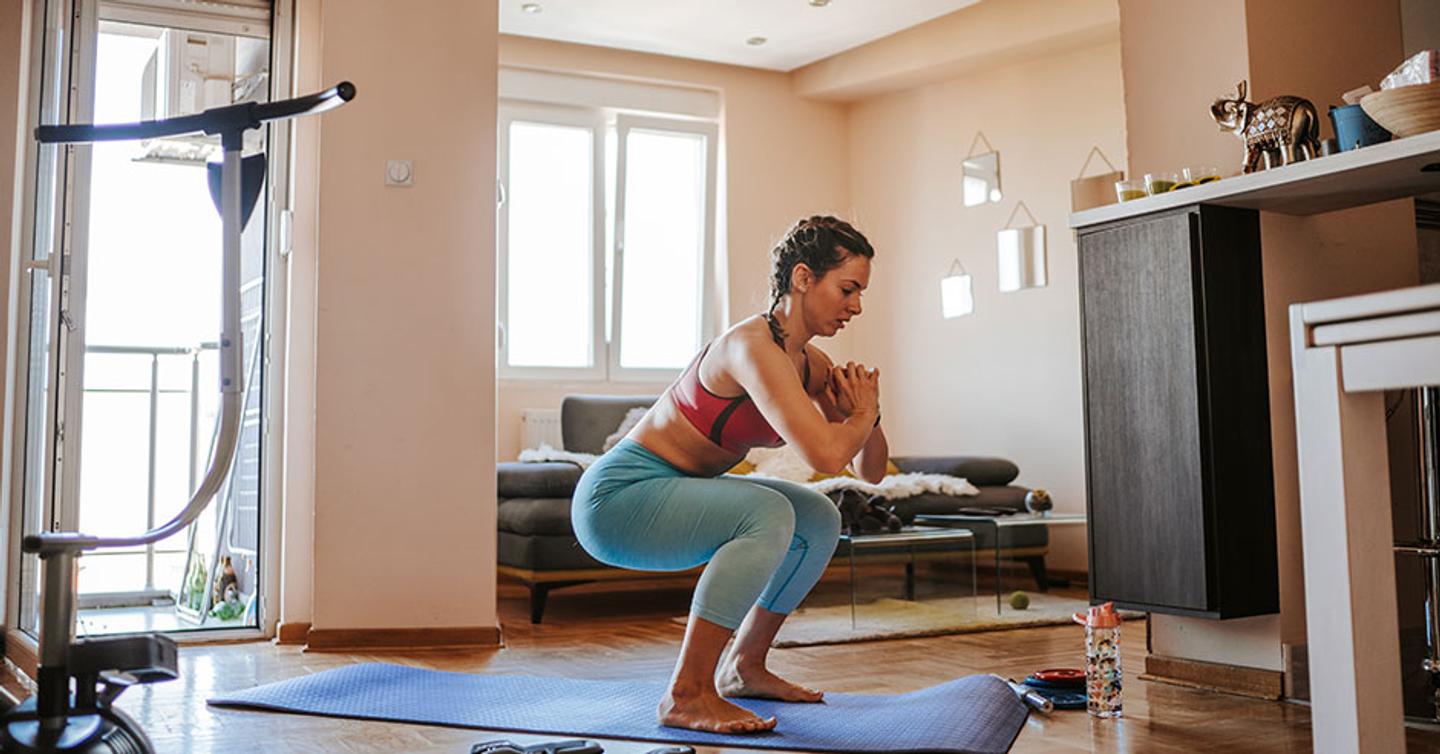
Help Athletes Stay Healthy During COVID-19
Reading Time: 6 minutes 55 seconds
BY: ISSA
DATE: 2021-04-13
We're nowhere close to out of the woods yet, but have you heard... SPORTS ARE BACK! At least in a way that resembles the way they were in early 2020. With various precautions like masks, washing of equipment, and trading the high five with an elbow bump, we're starting to see sports teams and athletic leagues get back down to business.
The biggest downside? With gym closures and lockdowns for much of the past year, a lot of athletes are not in the condition they used to be. From youth athletes to pro athletes, many people have been inactive since the beginning of the COVID-19 crisis.
To prevent injury and get any athlete back into the action, you'll need to know how to train in the current environment. The return to physical activity doesn't have to be daunting, but it is necessary.
The Pandemic and Physical Activity
The COVID-19 pandemic has been the cause of business closures all over the world. Gyms, sports complexes, and even sports leagues are no exception. Millions of people (athletes and non-athletes) have contracted COVID along the way as well. COVID-19 symptoms can range from undetectable to severe and the disease can affect physical performance even after the individual no longer has symptoms. Namely, cardiovascular and lung function, energy levels, and the sense of taste or smell can be negatively affected long-term.
Around the world, physical activity levels plummeted during lockdowns and closures. One study in the Annals of Internal Medicine found that from March 2020 to April 2020, the number of steps taken by more than 450,000 users of the smartphone app Argus decreased by more than 27%. That was an average of 1,400 fewer steps taken each day! Some regions of the world saw more than a 48% decrease.
Simply put, this means people were moving less. Mental health issues like depression and anxiety began to rise as well. These conditions can make it harder to find the motivation to get up and exercise. Many youth athletes reported being deeply saddened by the cessation of sports.
The NCAA did an online survey with 37,658 student-athletes in the spring of 2020 to learn more about how they were feeling about COVID-19. A majority of respondents (22% of men and 33% of women) reported feeling lonely or isolated and 80% had no access to training facilities. 72% said they didn't have access to appropriate equipment and 50% said they didn't have access to coaches.
More importantly, 40% said they lacked motivation to train and 14% said they were too depressed to train. This is where a personal trainer or sports performance coach comes in!
At Home Sports Performance Training
If you can't go to the gym, bring the gym to you! Industry estimates state that there's been a 23% increase in the purchase of home gym equipment during the pandemic. Virtual training has also become more of a norm. The current climate is an ideal opportunity for personal trainers and strength coaches to expand their business and keep athletes moving.
Personal Trainers and At-Home Performance Training
Whether you're a personal trainer or a strength and conditioning coach, your credentials have prepared you for this very moment! You have the knowledge of human movement and programming to put together amazing exercise plans for clients and athletes of any age. Here are some tips to grow your business and help athletes prepare to get back out on the field.
Take your business online. The best way to reach clients stuck at home is on their phone, iPad, or laptop. Don't know where to start with online training? Learn everything you need to know and get certified as an Online Coach ASAP!
Get a training app. Maybe video calls aren't your thing, but you can write a mean exercise program. Try an app like SmartFitness to manage, track, and program for clients virtually. They'll see your notes and exercise videos easily from their mobile device as they move through their workouts.
Help clients find equipment. Athletes often need more than just some dumbbells and a jump rope to train. Help clients find (or build) equipment like plyo boxes, slam balls, hurdles, ladders, and jump trainers that can help them improve their athletic skills specifically. Try companies like Perform Better or even Amazon.
Create a plan for your clients. You know what sports your clients play. Create a 6- to 12-week plan for them that will get them from where they are now to competition-ready shape. You may have to get inventive based on what equipment they have! Show them that they can progress and that you have a vision for their success and they are likely to stay on track and employ your services throughout the process!
Set up check-in calls. Sometimes all an athlete needs to stay motivated is someone to be accountable to. Whether weekly or daily, set up non-training check-in calls to see how they are doing and just talk to them. Mental barriers are a huge limiting factor in sports performance.
Get your clients outside! In the spirit of social distancing, schedule a meet-up at a park or outdoor facility. It can be with one athlete or a group or team. Fresh air is great for the body and it's a chance to do some skill and agility training in-person while you build trust and camaraderie.
Teach clients about recovery. The act of recovering from physical exercise is more important than the actual exercise! Athletes push themselves hard, but they need you as their trainer or coach to show them the most effective ways to recover. Not sure about the science of recovery yet? You will be! Dive into the ISSA Exercise Recovery Specialist course today and learn more!

DIY At-Home Performance Training Tips
If you're going to go it alone with your at-home performance training, you can do it! There are a lot of people and resources at your fingertips to help.
Get equipment! Step one is to find some effective equipment. As mentioned earlier, places like Amazon and Perform Better are great resources for equipment you can get quickly.
Seek guidance. If you're able, hire a performance coach or personal trainer! If not, that's okay! There is a ton of free content available on sites like YouTube offering workouts and performance training techniques. Some great ones include The Apollo Athletic channel, Fitness Culture channel, and Evolve Functional Fitness Workouts. Many don't even require equipment!
Stay true to your sport. It's easy to get caught up in fitness trends. However, athletes need to think about the functional movements for their sport. For example, plyometrics and box jumping is a great tool for improving jump height in volleyball and basketball players, but it is of little use to a swimmer or soccer player. Likewise, extended cardio training is great for soccer, but not so much for a badminton or tennis player who must focus on agility, changes of direction, and interval training. Can't stress it enough: If you need help figuring out what to do, talk to a trainer! Get a consult and get some guidance!
Exercise to Try at Home
Functional, pain-free movement should be the goal for any athlete. No matter what their starting point is right now, improvements can be made with effort and consistency in training. Let's break down some activities that are good for both endurance and intermittent athletes.
Endurance Athletes
These are athletes that move or run for long periods. Think rowers, distance runners, and cyclists. Soccer and basketball players can also fall into this category. Incorporate these into your strength training routine to improve endurance at home:
Jogging or running - Set a distance or a time. If you're just getting back into it, start slow/short and build up.
Swimming - Great for improving cardiovascular health and endurance.
Running bleachers - Get outside and run some stairs to challenge your lungs...and your legs!
Hiking - Similar to bleachers, hiking challenging trails can improve your aerobic fitness.
Fartlek training - This style of running uses time or landmarks along the way to initiate increases or decreases in speed on a run. It's a great way to break up the monotony!
Intermittent Athletes
These are athletes who start and stop. Their competition is filled with small (or long) breaks where they can catch their breath before starting again. They also cut and turn a lot. Think volleyball, powerlifters, and tennis players. Try these exercises with your strength training to improve agility, jumping, and speed.
Plyometrics - Often includes jumping with the goal of creating maximum force as fast as possible. Think box jumps, squat jumps, lunge jumps, etc.
Cone drills - These train changes of direction and building up speed.
Shuttle runs - Often ranging from 10 to 50 yards, shuttle runs are short-distance sprint efforts.
Speed ladders - Speed, agility, and footwork all in one! There are endless footwork patterns that can be done on a ladder. Get creative!
Keep in mind that many athletes will need a little of both types of exercise—endurance and agility. Strength and flexibility training are necessary foundations for ALL athletes!
Athlete Mindset: Prepared for Anything!
Not to scare you, but there are many communicable diseases a gym-goer or athlete can come in contact with on a regular basis outside of the COVID-19 virus. Cleaning equipment and taking regular precautions are always recommended no matter what's going on in the world.
Athletes have a certain mindset and an ‘athlete identity' that sets them apart. They are often motivated intrinsically (by themselves) and strive to hit goals and break records. We hear it all the time: Being an athlete is who they are. This identity as an athlete has made the last 12 months difficult. However, with the help of a good certified professional, any athlete can get back in the game quickly.
ISSA Certified Personal Trainers are equipped to work with clients of all life stages and goals. Take your training to the next level and really understand how athletes function and train! Become a Strength and Conditioning Coach today!
Featured Course
ISSA | Strength and Conditioning Coach
ISSA's Strength and Conditioning course bridges the gap between science and application by giving students the "how" of helping athletes achieve any sport-related goal. With this course, not only will you learn the exercise science behind strength and conditioning, but exactly how to create the perfect training program for any athlete. Further, it offers one of the only accredited exams in the strength and conditioning space, making you a hot commodity to any employer.